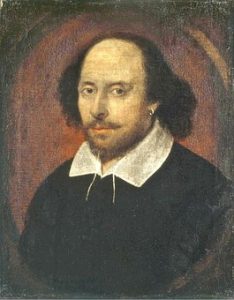Shakespeare and Mendelssohn Needed More Room Than Symphony Supplied
Last week, Symphony Hall was just too crowded with geniuses.
Ideally, an orchestral concert features superior artists intent upon proper presentation of work by genius creators, usually one at a time. Like Mozart, whose Piano Concerto No. 24 (K. 491) was played for the new season’s second weekend by Rafael Payare and the orchestra with Vikingur Olafsson, pianist. (The program announced the Schumann Piano Concerto, Op. 54. More on that later.)
After intermission, though, the stage got crowded with masterpieces from two separate immortals: Felix Mendelssohn’s Incidental Music to A Midsummer Night’s Dream, by William Shakespeare.
The key word here is “incidental.” Mendelssohn wasn’t trying to turn Shakespeare’s fantasy into an opera, just help it along with some delicious musical bits, serving as the poet’s wingman.
But the music is so very juicy that it’s irresistible to concert audiences. There’s just never been better fairy music. And that wedding march has been a smash hit from the 1843 premiere. So endless recordings and concert suites have encouraged the score to stand alone.
The impulse to combine everything is irresistible. Maybe it has worked well, just not in my presence. The need for 50 musicians, a women’s chorus of two dozen or so and a couple of soprano soloists severely limits the opportunities for experimentation. What we tend to get instead is a full reading of the score by a symphony orchestra with slices of Shakespeare dialogue as decoration.
Such was the case last week, sadly.
You see, chopping up the script just doesn’t work. Editing, yes. World theatre has long shown that Shakespeare is endlessly adaptable. Dream can last three hours or 90 minutes without noticeable damage. But the three worlds of the play – the royal court of Athens, the working class of Elizabethan England and the realm of Fairyland – all must be adequately established for continuity and context at least, even at the expense of jettisoned romance and burlesque.
For the Symphony, Payare and his colleagues played with dutiful artistry even the most demanding reaches of this splendid score, though the delicate purity of the fairies’ revels wasn’t as glorious as the brassy blare of the Wedding March. The women of the Master Chorale sounded fine, as did the soloists. Suffice to say all the familiar musical buttons were pushed.
But the other fol-de-rol was, well, unfortunate.
The chunks of Shakespeare were read by miscast actors edging around the stage in black, usually a sign that management hasn’t the budget or the interest to provide costumes. The same level of nonchalant production had the roly-poly character man shouting lines into his face microphone while actually toting a script. The comedians weren’t bad (who can resist “Pyramus and Thisbe” or Bottom with his ass head?) but nothing could fix the effect of random meandering and confusing confrontations.
There were slide projections by Mike Tutaj, mostly on three large screens over the orchestra, that looked appropriate to some image of the play. Eventually, though, they were repeated enough to diminish impact. And, like Amanda Zieve’s lighting design, they were seriously muted by spill from the orchestra’s stand lights.
There are plenty of remedies for all this. Instead of a squad of miscellaneous actors imported from Chicago, for example, why not hire one master actor to simply sit near the conductor and read out the Shakespearean passages as needed? Certainly, a better job could be done with trimming the text. I can think of at least three or four folks here in town who would be a vast improvement. And there are artists out there who might respond to the technological challenges with some splendid breakthrough of performance.
In 1935, the great German stage director Max Reinhardt staged Dream with all the music and more, scraped together by Erich Korngold from other Mendelssohn compositions. The shell of the Hollywood Bowl was removed and a forest planted on the slope behind the stage. The ballet choreography was by Bronislaw Nijinska and cast included James Cagney, Joe E. Brown, an unknown Olivia de Havilland and Mickey Rooney as a particularly annoying Puck. The extravagant film version featured these actors plus others such as Victor Jory, Joe E. Brown and Dick Powell. The film, still available, is as notable for its gorgeous fairyland imagery as its uneven acting styles. It won some Oscars including one for the designer who painted the trees all orange to get that ethereal glow on the black and white screen.
What the Symphony Hall show needed was a visionary artistic presence like Reinhardt representing Shakespeare with integrity equal to Payare’s stewardship of the music. Gerard McBurney is listed as “stage director” so probably upon his shoulders should fall the blame. But the suspicion persists that the Symphony’s artistic management simply hasn’t the resources and the imagination to make such a program work.
Speaking of programs, there’s this business of the missing Schumann concerto. The sound of Mozart was readily obvious and there was a brief projection of the title Piano Concerto No. 24 as it began. But the program was all Schumann, there was no announcement (from a management that likes talking) and no program insert, as might be expected with such a switch.
At intermission, a member of the Symphony staff (according to his nametag) confirmed that there had been a program change “at the artist’s request” but admitted amiably that he had no idea what the substitution might have been.

Welton Jones has been following entertainment and the arts around for years, writing about them. Thirty-five of those years were spent at the UNION-TRIBUNE, the last decade was with SANDIEGO.COM.





Welton, in most of the program books there was a full page insert explaining the change from Schumann to Mozart and providing appropriate program notes for the Mozart C Minor Pusno Concerto. Obviously you were given a program without the insert, but the management attempted to prepare their patrons for the program change.